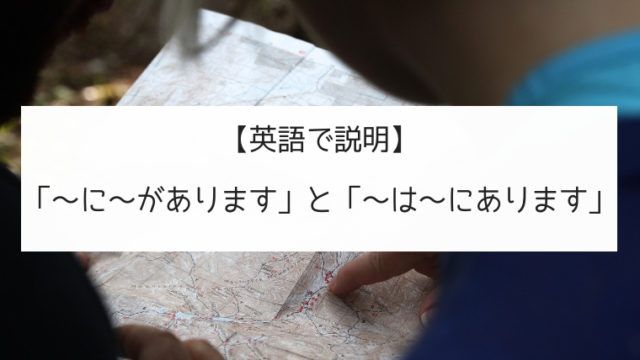このページでは「みんなの日本語 初級2」に登場する文型とその文型の英語解説のまとめページになります。
記事は作成中なので順次更新して行きます。
英語での説明が必要な場合や、ハンドアウトを作る場合などにお役立てください。
目次
みんなの日本語 初級2
第26課
| 文型 | 英語で補足 |
| 〜ていただけませんか | This sentence pattern is used to when you request someone to do something in a polite way. This is more polite than “〜てください” |
第27課
| 文型 | 英語で補足 |
| 〜しか〜ない | This is always used with a negative form. This is expressed that the amount is not enough or less than expected. |
| 〜し、〜し | This sentence pattern is used when you mention more than one reason. Even when only one reason can be used. It implies that the reason is not one. |
第30課
| 文型 | 英語で補足 |
| 〜ておく(準備) | This describes an action performed in preparation for something. |
| 〜ておく(放置) | This indicates keeping a state as it is. |
第31課
| 文型 | 英語で補足 |
| 〜ようと思っています | This sentence pattern is used to talk about the speaker’s determinations or plans. |
| 〜つもりです | This sentence pattern is used to express the speaker’s intention to do something. |
| 〜予定です | This sentence pattern is used to say that an action/plan is scheduled to happen or be done. |
| まだ〜ていません | This sentence pattern indicates that the action has not yet been done or a situation has not yet happened . |
第32課
| 文型 | 英語で補足 |
| 〜たほうがいい | This sentence pattern is used to give advice or give suggestions. This has the nuance that if the listener doesn’t follow the advice or the suggestion, a bad situation will happen. |
| 〜でしょう | This sentence pattern is often used to express predictions about something in the future or something uncertain. |
| 〜かもしれません | This sentence pattern indicates that a possibility is there. Compared to “〜でしょう”, the degree of sureness is lower. |
第33課
| 文型 | 英語で補足 |
| XはYという意味です。 | This is used when you explain the definition of a word, sentence, sign etc. |
第35課
| 文型 | 英語で補足 |
| Interrogative + Vばいいですか | This is used to ask the listener for advice or instructions. |
| 〜なら | なら is used to give advice to someone about what he/she just said. |
第36課
| 文型 | 英語で補足 |
| 〜ように | This sentence patten is used when you say what you are doing something in order to achieve your goal. |
| 〜ようになります | This sentence pattern indicates a change of state. It is used when you want to say that you can now do something you couldn’t do before |
| 〜ようにしています | This indicates habitual action. It is when the speaker decided to do something and continues to do it. |
第37課
| 文型 | 英語で補足 |
| 〜から | The particle “から” is used to explain what a particular thing is made from. |
第39課
| 文型 | 英語で補足 |
| 〜ので | “〜ので” indicates a cause or a reason, This is slightly more formal than “〜から” |
第40課
| 文型 | 英語で補足 |
| 〜ている | This sentence pattern is used when you try something. |
第41課
| 文型 | 英語で補足 |
| 〜いただきます | いただいます is more polite than もらいます。 This is used when the speaker receives something from someone in a high position. |
| 〜くださいます | くださいます is more polite than くれます。 This is used when someone in a hight position gives you something . |
第42課
| 文型 | 英語で補足 |
| 〜のに(用途) | This sentence pattern is used with “つかいます” to tell the purpose of using things. |
| 〜のに(評価) | This sentence pattern is used with “べんりです”, “ふべんです”, “いいです”, “わるいです” etc to evaluate things and places. |
第43課
| 文型 | 英語で補足 |
| (動詞)そうです | This sentence pattern is used when the speaker guesses that something will happen soon or in the future. |
| (形容詞)そうです | This sentence pattern is used when the speaker guesses what something is like based on his/her impressions. |
| 〜てきます | This sentence pattern indicates that the speaker is going to go somewhere to do something and come back. |
第44課
| 文型 | 英語で補足 |
| 〜すぎる | “〜すぎる” is “too much“ or “to excess” in English. This sentence pattern is used to express that an action or state is excessive. |
| 〜やすい | This sentence pattern is used to express that it is easy to carry out the action or an action is likely to occur. |
| 〜にくい | This sentence pattern is used when expressing that it is difficult to carry out the action or an action is unlikely to occur. |
| いadjectiveくする なadjectiveにする |
“〜くする/〜にする” menas “to make something (adjective)” |
| 〜にします | This sentence pattern is used when deciding on something or to select between several choices. |
第45課
| 文型 | 英語で補足 |
| 〜のに | This senence pattern is often used to show the speaker’s dissatisfaction, regret or feeling that something is unexpected. |
第46課
| 文型 | 英語で補足 |
| 〜ところです | This indicates that an action is just about to begin. |
| 〜ているところです | This indicates that an action is in progress. |
| 〜たところです | This indicates that an action has just been completed. |
| 〜たばかりです | This indicates that an action has just been completed or an event has occurred and time has not passed very much. However this expression is subjective, so even the words such as “one year“, “6 months” can be used if the speaker feels like the time is short. |
第47課
| 文型 | 英語で補足 |
| 〜そうです | This is an expression of hearsay. This is used to convey someone the information you got from another source. |
| 〜ようです | This is used to describe the speaker’s conclusion based on what the speaker has felt or observed from his/her five senses. |
第48課
| 文型 | 英語で補足 |
| 〜させていただけませんか | This sentence pattern is used when you ask permission politely to do something or to volunteer to do something. |
おすすめ書籍
created by Rinker
¥2,200
(2025/12/18 23:10:55時点 Amazon調べ-詳細)
(2025/12/18 23:10:55時点 Amazon調べ-詳細)

【みんなの日本語 初級1】文型の英語解説まとめ(随時更新中)このページでは「みんなの日本語 初級1」に登場する文型とその文型の英語解説のまとめページになります。
記事は作成中なので順次更新し...





